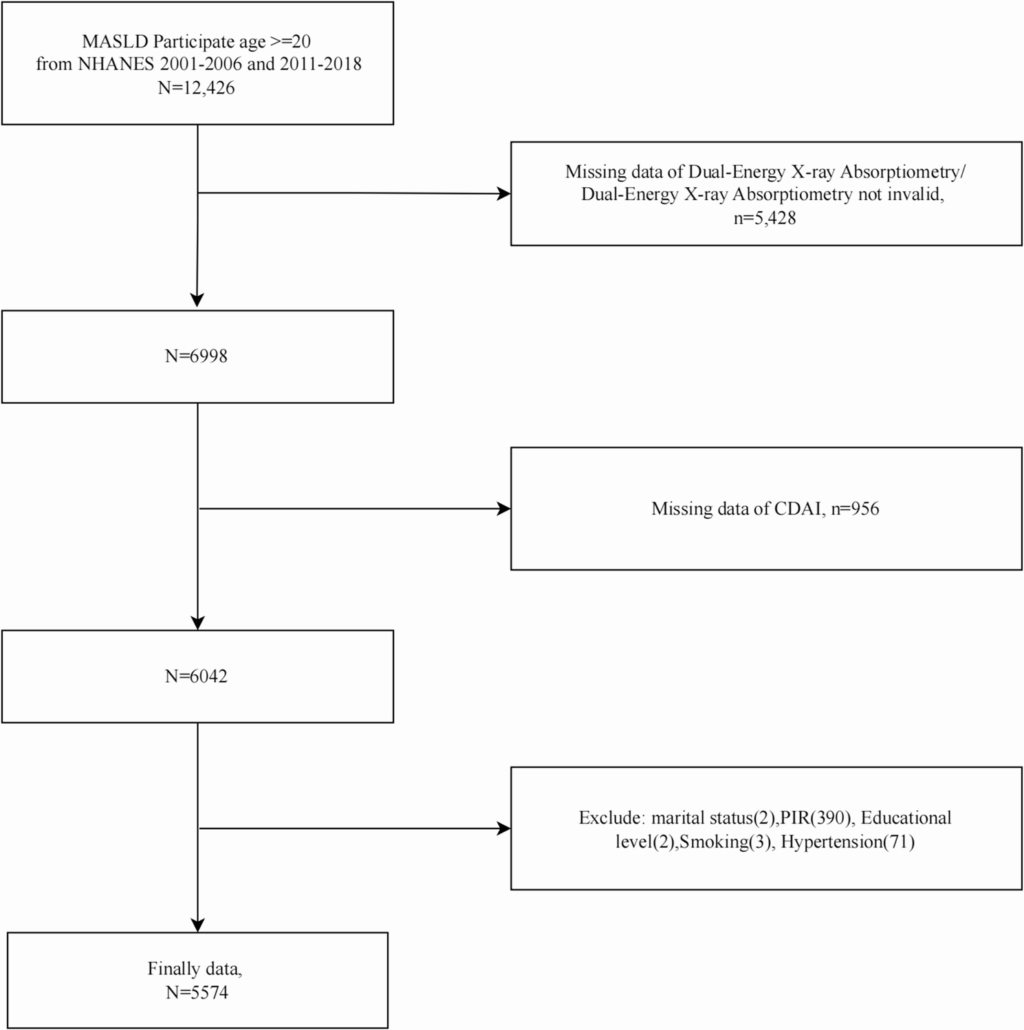
Specialists from leading international liver associations have recently proposed renaming “nonalcoholic fatty liver disease” (NAFLD) to “metabolic dysfunction-associated steatotic liver disease” (MASLD). This new terminology reflects the presence of at least one “cardiometabolic risk factor” (CMRF) contributing to steatotic liver disease (SLD). MASLD is now the most prevalent form of chronic liver disease worldwide, affecting over 33% of adults globally. It is increasingly recognized as a primary contributor to cirrhosis, hepatocellular carcinoma, and liver transplants.
The announcement comes as MASLD is acknowledged as a multisystem condition, influencing the likelihood of various systemic complications, including cardiovascular disease (CVD), different cancers, and chronic kidney disease. This highlights the complex impact of its disease burden. Meanwhile, sarcopenia, characterized by a decline in muscle mass and function, is linked to adverse health outcomes and shares common risk factors with MASLD, such as a sedentary lifestyle and obesity.
Linking MASLD and Sarcopenia
Recent clinical findings have demonstrated a robust connection between MASLD and sarcopenia. A meta-analysis revealed that patients with MASLD and sarcopenia are more likely to develop fibrosis compared to the general population. A systematic review indicated that sarcopenia’s prevalence in the MASLD cohort was 23.5%, correlating with an increased mortality rate.
Both MASLD and sarcopenia may be exacerbated by oxidative stress. Impaired mitochondrial activity in MASLD patients can lead to oxidative stress and increased hepatic lipid peroxidation products. This stress, combined with chronic inflammation, can disrupt protein metabolism, mitochondrial function, and neuromuscular signaling, contributing to muscle wasting and sarcopenia.
Dietary Antioxidants as a Potential Solution
Managing oxidative stress through dietary antioxidants may offer a viable strategy for mitigating sarcopenia in MASLD patients. Although findings remain controversial, several trials have shown the positive effects of dietary antioxidants on sarcopenia, both as a preventative measure and treatment. A novel nutritional measure, the “composite dietary antioxidant index” (CDAI), has been introduced to provide a holistic view of antioxidant compounds’ role in regulating oxidative stress.
The CDAI measures six essential antioxidant vitamins and minerals—vitamins A, C, and E; zinc; selenium; and carotenoids—indicating the collective antioxidant capacity within the dietary pattern. Observational studies suggest that a higher CDAI might be linked to a reduced frequency of sarcopenia in the general population, though research on its utility in the MASLD population is limited.
Study Design and Findings
Leveraging data from the “National Health and Nutrition Examination Survey” (NHANES), researchers aimed to determine variations within the CDAI concerning sarcopenia prevalence among individuals with MASLD. The study utilized NHANES data to fill a critical gap in understanding how whole-body antioxidant capacity interacts with MASLD pathophysiology to accelerate sarcopenia onset.
The NHANES is a cross-sectional survey measuring the dietary and wellness conditions of Americans. It employs a complex sampling approach to recruit approximately 5,000 noninstitutionalized adults annually. Data collection involves interviews and physical assessments at mobile examination centers, incorporating demographic, dietary, clinical, laboratory, and questionnaire-derived metrics.
From 12,426 individuals with MASLD considered for inclusion, 5,574 eligible subjects were included in the study. The CDAI was assessed using dietary antioxidant intake data from two 24-hour dietary recalls. The study found a significant inverse association between the CDAI and sarcopenia prevalence among MASLD patients. Each incremental increase in the CDAI correlated with an approximately 5.4% decrease in sarcopenia likelihood.
Implications and Future Directions
The findings suggest that nutrient-rich eating habits evaluated using the CDAI may be a viable strategy to delay the progression of sarcopenia in MASLD patients. The CDAI distinguishes diets rich in antioxidants from those deficient, providing a tool for examining the link between dietary antioxidants and chronic ailments.
Recent research has shown elevated CDAIs linked to chronic noncommunicable conditions like metabolic syndrome, cancers, cardiovascular diseases, cognitive decline, and biological aging. However, no prior research has investigated sarcopenia in MASLD patients in connection with the CDAI.
These results indicate that a diet abundant in antioxidants might decrease sarcopenia prevalence in the MASLD cohort, offering new perspectives for reducing sarcopenia’s burden. However, prospective cohort studies are necessary to validate these results and explore optimal dosing for specific nutrients.
The study’s cross-sectional nature prevents establishing causal associations, and self-reported dietary data may introduce memory bias. Despite these limitations, the study provides a preliminary clinical rationale for precision nutritional interventions in MASLD patients, emphasizing the potential benefits of nutrient-dense diets in preserving skeletal-muscular well-being.







